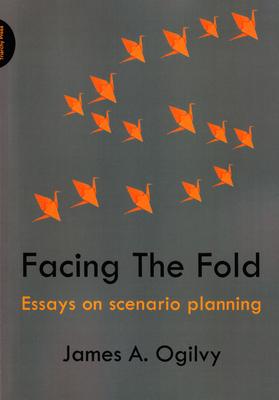How do we face the uncertainty and complexity of the future? An overly optimistic perspective can be motivating but easily dismissed as naïve or shallow; the pessimistic outlook may be considered to be deeper and more ’knowing’ but could lead to inaction. But limiting our visions of the future to simply one of these two ’branches’ would mean adopting a position that is ultimately no more than a fatalistic rut. Facing The Fold is a collection of highly regarded journal essays about how scenario thinking uses the capacious space of the ’fold’ to encourage thinking around alternative scenarios-to create the future we both want and need. Scenarios are not predictions, nor are they strategies. Scenarios are stories - narratives of alternative futures, designed to highlight the risks and opportunities involved in specific strategic issues. According to Ogilvy, scenario planning has generally been considered an art, but here he discusses the extent to which it can also be considered an integral part of ’the new sciences’, especially complexity science. The narrative of scenario planning is of particular importance to complexity practitioners. Like complexity approaches, the advantage of scenarios is that they take into account the values and the contextual complexity surrounding the community and provide a way to reflect on the consequences of any strategy changes. The book is divided into 3 clear sections: Section I is about the ’nuts and bolts’ of scenario planning and, as outlined in the first chapter co-authored with Peter Schwartz, the steps involved in the practice of developing scenarios, and the key considerations to ensure successful scenario planning. Section II situates scenario planning in the larger context of the human sciences of anthropology, psychology, literary criticism, philosophy and sociology. Section III offers a set of case studies-actual scenarios created for real projects. Lessons learnt from working in the public and the private sector are followed by two in-depth case studies on the future of higher education in California and K-12 public education in Seattle. The challenges and opportunities that were faced at the time are uncannily similar to current problems in the funding of education facilities around the world. Alternative scenarios to the momentum of increasing deficit and declining quality were developed at the time, and the author provides an afterword to show how these scenarios have held up over time. As Adam Kahane (Reos Partners and the University of Oxford) said in his review ’...This wonderful collection of his writings is a most welcome and valuable contribution to the field.’
| FindBook |
有 1 項符合
Facing the Fold: Essays on Scenario Planning的圖書 |
 |
Facing the Fold: Essays on Scenario Planning 作者:Ogilvy 出版社:Triarchy Press Ltd 出版日期:2011-02-28 語言:英文 規格:平裝 / 312頁 / 24.41 x 16.99 x 1.65 cm / 普通級/ 初版 |
| 圖書館借閱 |
| 國家圖書館 | 全國圖書書目資訊網 | 國立公共資訊圖書館 | 電子書服務平台 | MetaCat 跨館整合查詢 |
| 臺北市立圖書館 | 新北市立圖書館 | 基隆市公共圖書館 | 桃園市立圖書館 | 新竹縣公共圖書館 |
| 苗栗縣立圖書館 | 臺中市立圖書館 | 彰化縣公共圖書館 | 南投縣文化局 | 雲林縣公共圖書館 |
| 嘉義縣圖書館 | 臺南市立圖書館 | 高雄市立圖書館 | 屏東縣公共圖書館 | 宜蘭縣公共圖書館 |
| 花蓮縣文化局 | 臺東縣文化處 |
|
|
圖書介紹 - 資料來源:博客來 評分:
圖書名稱:Facing the Fold: Essays on Scenario Planning
|










